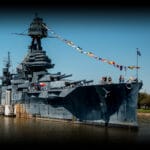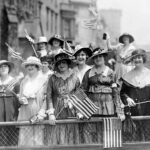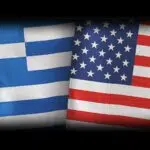Asiatic Memorial Fleet Day is observed every year on March 1. In 1942, U.S.S. Houston, a vessel part of the Asiatic Fleet, was sunk by the Japanese in which many Americans lost their lives. On the 60th anniversary of the event, former U.S. President George W. Bush proclaimed March 1 as a day dedicated to the Asiatic Fleet as a special tribute to the veterans and those that lost their lives during the war. Central to the day is people gathering at a memorial ceremony to honor the veterans and the ship that was part of World War II after Pearl Harbor.
History of Asiatic Fleet Memorial Day
The U.S. Navy’s presence in the East Asian and Pacific Islands dates to the early 19th century and was intended to break European influence in the East Indies. The primary goal was to protect Americans residing in the region and American interests in territories near China. They provided military support to diplomats by maintaining a strong naval presence. Strengthening their dominance in these regions was always crucial to the U.S. as most of these areas were often hit by natural disasters and civil uprisings. They could assist American citizens and local civilians during these times.When World War II broke out in 1939, America did not enter the war until the Japanese attacked their fleet at Pearl Harbor in 1941. In response to the casualties and the threat faced in South Asia, the U.S. became actively involved to protect its territories from the Japanese. The Asiatic Fleet was summoned to defend the Japanese advance. Heavily outnumbered by Japanese warships, British, Dutch, and Australian navies joined the fleet. Coordinated attacks on Japanese supply lines in Balikpapan and Badung Strait helped impede the Japanese for a while, but soon they were outmatched.Legend has it that the entire Asiatic Fleet went down with their guns still firing, not surrendering until their last breath. The fleet was destroyed but the tragedy left an enduring spirit of courage and selfless dedication in the U.S. Navy, which contributed to victory in World War II. After the war, the Seventh Fleet replaced the Asiatic Fleet and supported the Americans and allies during the conflicts in Vietnam and Korea, helping to promote peace and stability in the region. As a tribute to the Asiatic Fleet, former President George W. Bush proclaimed March 1 as a memorial day for the service and sacrifice of the Asiatic Fleet and its veterans.
Asiatic Fleet Memorial Day timeline
The Asiatic Fleet is formed.
America enters the war after the Japanese attack their fleet at Pearl Harbor.
Despite being heavily outnumbered by the Japanese, the American and Australian cruisers Houston and Perth fight until they sink.
U.S. President Bush proclaims March 1 as Asiatic Memorial Fleet Day and it is observed annually ever since.
Asiatic Fleet Memorial Day FAQs
Who was the last commander of the Asiatic Fleet?
On 25 July 1939, Admiral Thomas C. Hart was appointed the commander-in-chief of the fleet and he served as the last commander of the U.S. Asiatic Fleet.
What was the Navy Asiatic Squadron?
The Asiatic Squadron was a squadron of United States Navy warships stationed in East Asia in the late 19th century.
Where did the U.S. Navy defeat the Spanish fleet?
On May 1, 1898, in Manila Bay in the Philippines, the U.S. Asiatic Squadron destroyed the Spanish Pacific fleet in the first major battle of the Spanish-American War.
How to Observe Asiatic Fleet Memorial Day
-
Read about the Asiatic Fleet
A good way to celebrate this day is to read up on the history and how the Asiatic Fleet achieved its legendary status. Find a story as told by a veteran and delve into the depths of their fascinating legend.
-
Honor the veterans
Organize an event to honor the veterans. Invite the veterans of World War II and the Asiatic Fleet to a gathering, and honor them by acknowledging their services. Give a toast in their name.
-
Share on social media
Talk about the Asiatic Fleet on social media and initiate a hashtag stream. Rekindle the past to inspire the youth and instill the same level of dedication and spirit in them for their nation.
5 Important Facts About The Asiatic Fleet
-
Smaller than a normal fleet size
The Asiatic Fleet was a small squadron of cruisers and destroyers, which would rarely be recognized as a naval fleet.
-
Prestige bigger than its size
Despite its small size, one of the four four-star admirals of the U.S. navy was assigned as commander in chief of the fleet.
-
A de facto Ambassador to China
Although there was a minister from America for China, the power and authority of the admiral of the Asiatic Fleet outranked the minister.
-
26 commanders in 40 years
There were 26 commanders of the Asiatic Fleet during the 40-year history of the fleet.
-
They lost 19 vessels
Out of 40, the Asiatic Fleet lost 19 vessels, after which the remaining allied vessels surrendered and retreated to Australia.
Why Asiatic Fleet Memorial Day is Important
-
Remembering the heroes
The day aims to remember our fallen heroes and to keep them alive in our memories and hearts. These soldiers dedicated their lives to protecting their fellow Americans in faraway territories and deserve a day to recognize their services.
-
Preserving history
As a nation, it is our duty to preserve our history and immortalize the details that brought us to our present-day greatness. If it were not for these events and heroes, we would have no history to cherish and celebrate.
-
Honoring our veterans and heroes
After the remembrance and preservation of history, what next? We honor the veterans and heroes and the part they played in history by thanking them for their services. The point is to make these veterans and heroes proud of their services and sacrifices.
Asiatic Fleet Memorial Day dates
| Year | Date | Day |
|---|---|---|
| 2023 | March 1 | Wednesday |
| 2024 | March 1 | Friday |
| 2025 | March 1 | Saturday |
| 2026 | March 1 | Sunday |
| 2027 | March 1 | Monday |















































































































































